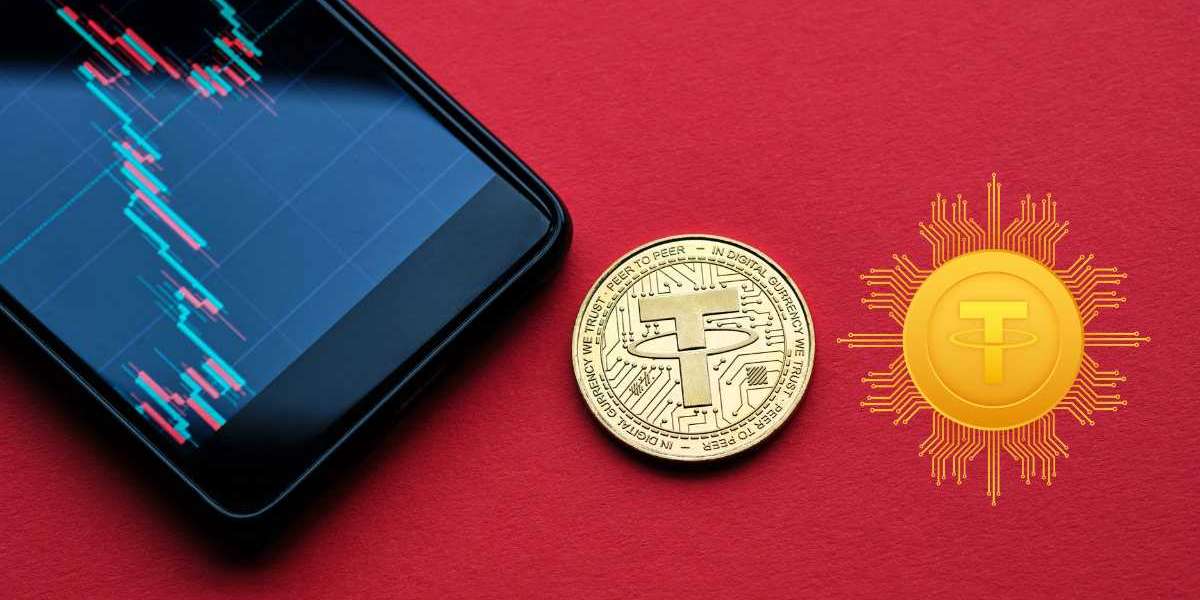In a notable development for the stablecoin sector, Tether recently completed a cross-chain swap, moving over $2 billion in USDT to the Ethereum blockchain on November 6, 2024. This significant transfer from multiple blockchain networks underscores Tether's efforts to optimize liquidity across platforms and highlights Ethereum's ongoing appeal as a high-liquidity hub for institutional and retail traders alike. This article examines the details, implications, and motivations behind Tether's decision, along with its potential impact on the broader cryptocurrency market.
Tether’s Strategic Cross-Chain Swap: Moving USDT to Ethereum
In its latest operational move, Tether transferred large amounts of USDT from other blockchain networks—such as Tron, Avalanche, NEAR, and EOS—to Ethereum. The swap was conducted at the request of a major, unnamed exchange seeking to consolidate assets on Ethereum for improved liquidity and compatibility with decentralized finance (DeFi) applications.
Details of the Cross-Chain Swap
The specifics of Tether’s transfer were as follows:
- 1 billion USDT from the Tron network to Ethereum
- 600 million USDT from the Avalanche C-Chain to Ethereum
- 300 million USDT from the NEAR protocol to Ethereum
- 60 million USDT from the EOS network to Ethereum
This transfer aligns with Tether’s goal to provide liquidity where it is most needed. The stablecoin issuer assured users that this move would not affect the total supply of USDT, as it merely represents a relocation of tokens across networks.
Why Ethereum? The Network's Growing Role in DeFi and Institutional Trading
Ethereum continues to play a central role in decentralized finance, making it an attractive option for Tether's cross-chain swaps. Some key reasons Ethereum is favored include:
- High Liquidity: As one of the most widely used blockchains, Ethereum offers substantial liquidity, allowing for easier entry and exit points in trading.
- Compatibility with DeFi: Ethereum’s robust DeFi ecosystem allows USDT holders to engage in various financial activities, including lending, borrowing, and staking.
- Increased Institutional Use: Institutions often prefer Ethereum due to its extensive wallet compatibility and compliance-friendly infrastructure.
Despite its advantages, Ethereum also faces challenges such as higher transaction fees, which is why many USDT transactions still occur on other, more cost-effective networks like Tron.
Tether’s Reserve Assets and Financial Transparency
Composition of Tether's Reserves
To address ongoing concerns about asset backing, Tether has made efforts to publicly disclose the composition of its reserves. As of the latest reporting, Tether's holdings include:
- Over $100 billion in U.S. Treasury bills
- Bitcoin holdings valued at approximately $6.2 billion
- Gold holdings amounting to 48 tons
These assets aim to stabilize Tether’s value, ensuring its 1:1 dollar peg. Notably, Tether also maintains a surplus of $6 billion in reserve, further enhancing its financial stability.
Growing Demand for Stablecoins in Emerging Markets
Recent reports highlight that Tether’s USDT, now with a market cap of nearly $120 billion, has become a go-to option in regions with depreciating local currencies. Research from Chainalysis shows that users in emerging markets increasingly view USDT as a store of value, not merely a trading tool. This is largely due to Tether's ability to maintain stability even amid market volatility, thereby providing an alternative to volatile local currencies.
Broader Implications for the Stablecoin and Crypto Markets
Tether’s Role as a Fiat Off-Ramp
As the most widely used stablecoin, Tether serves as a critical “fiat off-ramp” within the crypto ecosystem, enabling users to convert volatile crypto holdings into a stable asset pegged to the U.S. dollar. This function has grown in importance as regulatory scrutiny around cryptocurrencies increases, particularly in the U.S., where there are ongoing discussions regarding the regulation of stablecoins.
Looking Ahead: Tether’s Upcoming Projects for 2024
Tether has ambitious plans for 2024, including five new projects aimed at challenging centralized Web2 services. These initiatives are expected to leverage the benefits of blockchain technology, such as transparency, security, and user control, as Tether continues to expand beyond its current role as a stablecoin issuer. This strategy aligns with Tether's objective to offer decentralized alternatives to popular services, further supporting the stablecoin’s growing influence in the digital finance world.
What the Swap Means for Tether and Crypto Investors
Tether’s $2 billion swap to Ethereum highlights a strategic shift aimed at enhancing liquidity and catering to the needs of institutional and retail investors. The choice of Ethereum as the primary network for this swap demonstrates the platform's importance within the DeFi landscape, despite competition from networks like Tron for lower transaction fees. As Tether continues to innovate and expand its reach, investors and stakeholders should expect more cross-chain activities that strengthen the stablecoin's position and potentially impact liquidity and price stability across the crypto markets.
Key Points Recap:
- Ethereum's Role: Chosen for its liquidity, institutional adoption, and DeFi compatibility.
- Reserve Transparency: Tether’s asset backing includes U.S. Treasuries, Bitcoin, and gold.
- Market Dynamics: USDT demand is surging, particularly in emerging markets as a store of value.
- Future Outlook: New projects in 2024 to expand Tether's impact beyond stablecoins.
With this structured approach, Tether appears poised to maintain its dominance in the stablecoin market while supporting the broader adoption of blockchain technology.














